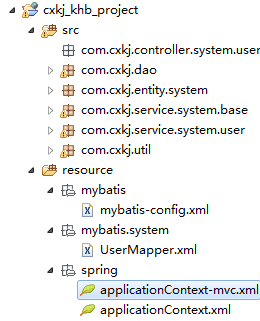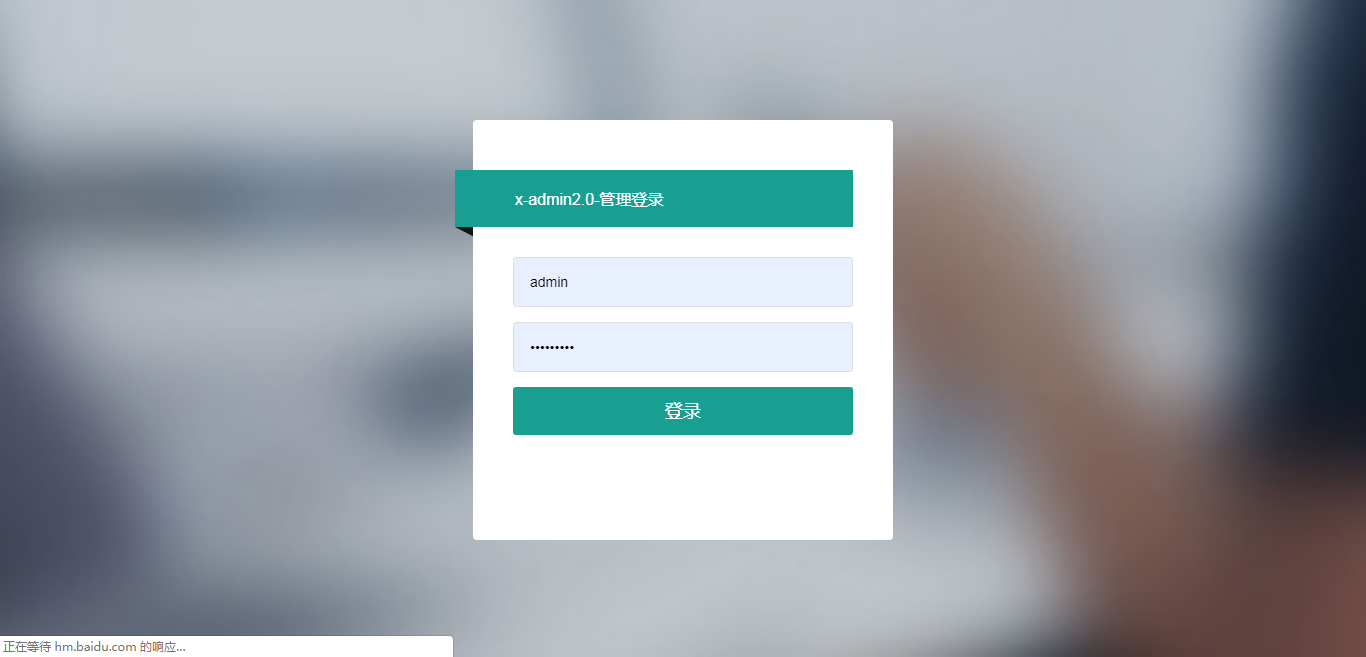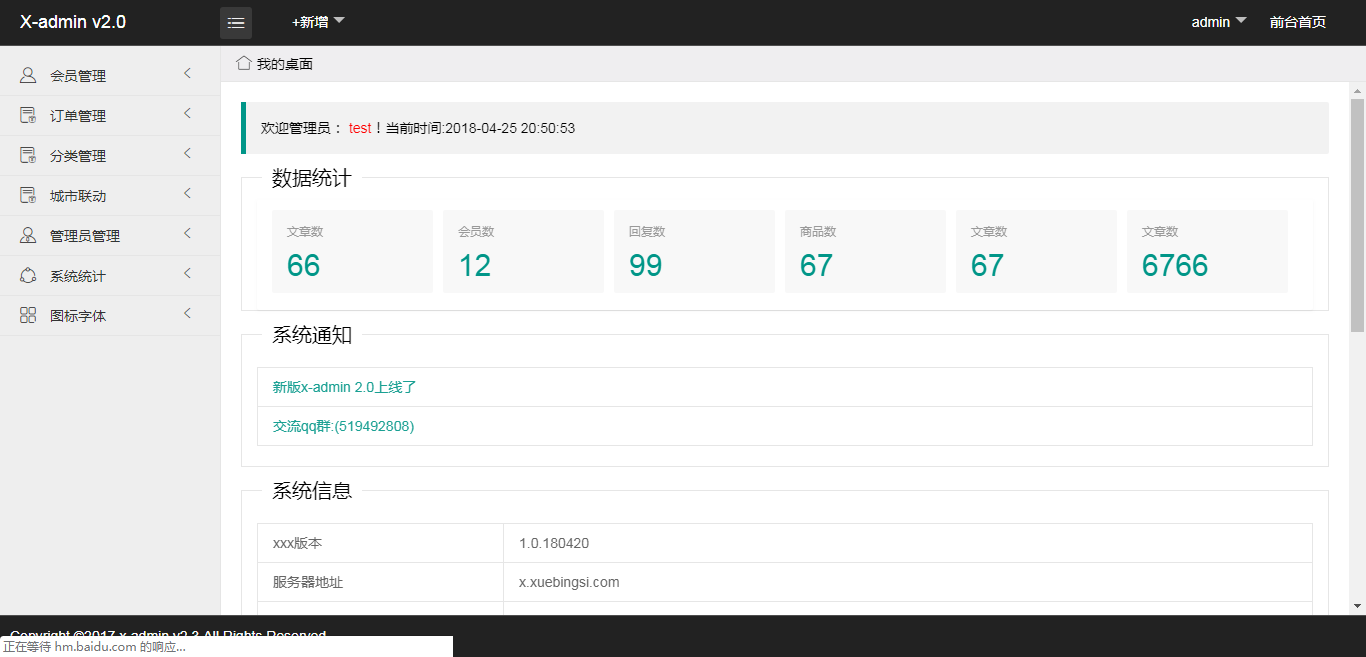crm銷售管理系統(一)SSM框架搭建
前言:ssm框架是spring+springMvc+Mybatis的縮寫,是繼SSH框架後又一個主流的java EE企業級框架,適用於搭建各種大型的企業級應用系統。這不,我所在公司的產品也是基於該主流框架進行搭建的。初識SSM框架是各種的不適應,不過使用久了發現ssm框架異常順手。使用幾個月下來可以說在開發公司產品專案上已經沒什麼大問題了,但是我才發現我做的開發都是在前輩搭建好框架的基礎上進行的開發,其實就是ctrl+c,ctrl+v的模式,這不就是搬運工嘛,我可不想只做搬運工。因為我自己以前也做過業務,深知客戶銷售管理的重要性,所以我就想著乾脆自己做一個crm的銷售管理系統吧,順便也把SSM框架重頭到尾自己親手搭建一遍,豈不快哉!
說幹就幹!
1.首先匯入所有ssm所需要用到的包,如下圖所示:(網上搜索ssm框架所需要的jar包一搜一大把,不懂的可私聊我拿包)

還有一個包千萬別忘記匯入了:

根據你所選擇的資料庫匯入相應的jar包
此步驟雖說簡單,但這個步驟成功了,就向著專案搭建成功邁出了一大步了。
2.建立專案結構:


建立resource資料夾,用於存放mybatis以及spring的xml檔案的地方(此步驟一定需要注意,要把resource標註為資原始檔包,不然後續啟動伺服器,是無法掃描到xml檔案的)
static資料夾用於存放靜態的資原始檔,比如你專案需要引用的前端後臺框架模板或者js,css等檔案
下面就開始程式碼部分:
1.建立SysUser實體類
1 public class SysUser { 2 private int userId;//使用者ID 3 private String userName;//使用者名稱 4 private String password;//密碼 5 private String name; //姓名 6 private String rights;//許可權 7 private String roleId;//角色 8 private String lastLoginTime;//最後登入時間9 private String ip;//登入IP 10 private String status;//狀態 11 private String bz;//備註 12 private String email;//電子郵箱 13 private String number;//編號 14 private String phone;//手機號 15 private int sysId;//所屬公司 16 public SysUser() { 17 super(); 18 } 19 public SysUser(String userName, String password) { 20 super(); 21 this.userName = userName; 22 this.password = password; 23 } 24 25 public SysUser(int userId) { 26 super(); 27 this.userId = userId; 28 } 29 public int getUserId() { 30 return userId; 31 } 32 . 33 . 34 . 35 . 36 . 37 .getter(),setter()程式碼自行補充完整
2.新建mybatis-coonfig.xml檔案
1 <?xml version="1.0" encoding="UTF-8"?> 2 <!DOCTYPE configuration PUBLIC "-//mybatis.org//DTD SQL Map Config 3.0//EN" 3 "http://mybatis.org/dtd/mybatis-3-config.dtd"> 4 <configuration> 5 6 <typeAliases> 7 <!-- 這裡新增生成的實體類 --> 8 <typeAlias type="com.cxkj.entity.system.SysUser" alias="SysUser"/> 9 <!-- 傳引數據,封裝的用於傳入mapping中的類--> 10 <typeAlias type="com.cxkj.util.PageData"alias="pd"/> <!-- 設定的pd的引數,將來在mapper.xml檔案中有用到 --> 11 </typeAliases> 12 13 14 </configuration>
3.新建pageData實體類,把要傳入mapping中的程式碼封裝在這個實體類當中,該類繼承了hashmap並實現了map介面
1 package com.cxkj.util; 2 3 import java.util.HashMap; 4 import java.util.Map; 5 6 import javax.servlet.http.HttpServletRequest; 7 8 import org.aspectj.weaver.patterns.ThisOrTargetAnnotationPointcut; 9 10 import javassist.expr.Instanceof; 11 12 /** 13 * @className: 14 * @author cxkj-gjc 15 * @version 1.0 16 */ 17 public class PageData extends HashMap implements Map { 18 private static final long serialVersionUID = 1L; 19 Map map = null; 20 HttpServletRequest request; 21 22 public PageData(){ 23 24 this.map = new HashMap(); 25 } 26 27 public Object get(Object key){ 28 Object object = null; 29 if (this.map.get(key) instanceof Object[]){ 30 Object[] arr = (Object[])this.map.get(key); 31 object = this.request.getParameter((String)key) == null ? arr : this.request == null ? arr : arr[0]; 32 }else{ 33 object = this.map.get(key); 34 } 35 36 return object; 37 } 38 39 public String getString(String key){ 40 41 return (String)get(key); 42 } 43 44 public Object put(Object key,Object value){ 45 46 return this.map.put(key, value); 47 48 } 49 50 public Object remove(Object key){ 51 52 return this.map.remove(key); 53 } 54 55 public void clear(){ 56 57 this.map.clear(); 58 } 59 60 public boolean isEmpty(){ 61 return this.map.isEmpty(); 62 63 } 64 public void putAll(Map map){ 65 66 this.map.putAll(map); 67 68 } 69 public int size(){ 70 71 return this.map.size(); 72 } 73 74 public boolean containsKey(Object key){ 75 return this.map.containsKey(key); 76 } 77 78 public boolean containsValue(Object value){ 79 80 return this.map.containsValue(value); 81 } 82 }
4.UserMapper.xml檔案,在該檔案中編寫sql語句實現使用者登入的功能:
1 <?xml version="1.0" encoding="UTF-8"?> 2 <!DOCTYPE mapper PUBLIC "-//mybatis.org//DTD Mapper 3.0//EN" 3 "http://mybatis.org/dtd/mybatis-3-mapper.dtd"> 4 <mapper namespace="UserMapper"> 5 <!--表名 --> 6 <sql id="tableName"> 7 sys_user 8 </sql> 9 10 <!-- 欄位 --> 11 <sql id="Field"> 12 <!-- USER_ID, --> 13 USERID, 14 USERNAME, 15 PASSWORD, 16 NAME, 17 RIGHTS, 18 ROLEID, 19 LASTLOGIME, 20 IP, 21 STATUS, 22 BZ, 23 EMAIL, 24 NUMBER, 25 PHONE, 26 SYSID 27 </sql> 28 29 <!-- 欄位值 --> 30 <sql id="FieldValue"> 31 #{USERID}, 32 #{USERNAME}, 33 #{PASSWORD}, 34 #{NAME}, 35 #{RIGHTS}, 36 #{ROLEID}, 37 #{LASTLOGIME}, 38 #{IP}, 39 #{STATUS}, 40 #{BZ}, 41 #{EMAIL}, 42 #{NUMBER}, 43 #{PHONE}, 44 #{SYSID} 45 </sql> 46 47 <select id="getUserInfo" parameterType="pd" resultMap="pd"> 48 SELECT 49 <include refid="Field"></include> 50 FROM 51 <include refid="tableName"></include> 52 WHERE 53 1 = 1 54 <if test="USERNAME != null"> 55 AND 56 USERNAME = #{USERNAME} 57 </if> 58 <if test="PASSWORD != null"> 59 AND 60 PASSWORD=#{PASSWORD} 61 </if> 62 </select> 63 </mapper>
5.新建applicationContext-mvc.xml檔案,這個檔案主要用於springmvc控制器的相關配置:
1 <?xml version="1.0" encoding="UTF-8"?> 2 <beans xmlns="http://www.springframework.org/schema/beans" 3 xmlns:xsi="http://www.w3.org/2001/XMLSchema-instance" 4 xmlns:context="http://www.springframework.org/schema/context" 5 xmlns:mvc="http://www.springframework.org/schema/mvc" 6 xsi:schemaLocation="http://www.springframework.org/schema/beans 7 http://www.springframework.org/schema/beans/spring-beans.xsd 8 http://www.springframework.org/schema/context 9 http://www.springframework.org/schema/context/spring-context-4.1.xsd 10 http://www.springframework.org/schema/mvc 11 http://www.springframework.org/schema/mvc/spring-mvc-4.1.xsd"> 12 13 <!-- 告知Spring,我們啟用註解驅動 --> 14 <mvc:annotation-driven/> 15 <!-- DispatcherServlet不處理靜態資源,交給伺服器預設的servlet處理 --> 16 <mvc:default-servlet-handler/> 17 18 <!-- 指定要掃描的包的位置 --> 19 <context:component-scan base-package="com.cxkj.*" /> 20 21 <!-- 對靜態資原始檔的訪問,因為Spring MVC會攔截所有請求,導致jsp頁面中對js和CSS的引用也被攔截,配置後可以把對資源的請求交給專案的 22 預設攔截器而不是Spring MVC--> 23 <mvc:resources mapping="/static/**" location="/,/static/" /> 24 <mvc:resources mapping="/uploadFiles/**" location="/,/uploadFiles/" /> 25 <!-- 配置Spring MVC的檢視解析器 --> 26 <bean class="org.springframework.web.servlet.view.InternalResourceViewResolver"> 27 <!-- 有時我們需要訪問JSP頁面,可理解為在控制器controller的返回值加字首和字尾,變成一個可用的URL地址 --> 28 <property name="prefix" value="/WEB-INF/jsp/"/> 29 <property name="suffix" value=".jsp"/> 30 31 </bean> 32 </beans>
6.applicationContext.xml配置:
1 <?xml version="1.0" encoding="UTF-8"?> 2 <beans xmlns="http://www.springframework.org/schema/beans" 3 xmlns:xsi="http://www.w3.org/2001/XMLSchema-instance" 4 xmlns:tx="http://www.springframework.org/schema/tx" 5 xsi:schemaLocation="http://www.springframework.org/schema/beans 6 http://www.springframework.org/schema/beans/spring-beans.xsd 7 http://www.springframework.org/schema/tx 8 http://www.springframework.org/schema/tx/spring-tx.xsd"> 9 10 <!--資料來源-連結資料庫的基本資訊,這裡直接寫,不放到*.properties資原始檔中--> 11 <bean id="dataSource" 12 class="org.springframework.jdbc.datasource.DriverManagerDataSource"> 13 <property name="driverClassName" value="com.microsoft.sqlserver.jdbc.SQLServerDriver" /> 14 <property name="url" value="jdbc:sqlserver://127.0.0.1:1433;database=EmpManagerDB" /> 15 <property name="username" value="sa" /> 16 <property name="password" value="caj123" /> 17 </bean> 18 19 20 21 <!-- 配置資料來源,載入配置,也就是dataSource --> 22 <bean id="sqlSessionFactory" class="org.mybatis.spring.SqlSessionFactoryBean"> 23 <property name="dataSource" ref="dataSource" /> 24 <property name="configLocation" value="classpath:mybatis/mybatis-config.xml" /> 25 <property name="mapperLocations" value="classpath:mybatis/*/*.xml"></property> 26 </bean> 27 <!-- DAO介面所在包名,Spring會自動查詢之中的類 --> 28 <bean class="org.mybatis.spring.mapper.MapperScannerConfigurer"> 29 <property name="basePackage" value="com.cxkj.dao" /> 30 <property name="sqlSessionFactoryBeanName" value="sqlSessionFactory"></property> 31 </bean> 32 <bean id="sqlSessionTemplate" class="org.mybatis.spring.SqlSessionTemplate"> 33 <constructor-arg index="0" ref="sqlSessionFactory" /> 34 </bean> 35 36 <!--事務管理--> 37 <bean id="transactionManager" 38 class="org.springframework.jdbc.datasource.DataSourceTransactionManager"> 39 <!--注入dataSource--> 40 <property name="dataSource" ref="dataSource" /> 41 </bean> 42 <!--開啟事務註解掃描--> 43 <tx:annotation-driven transaction-manager="transactionManager"></tx:annotation-driven> 44 </beans>
7.web.xml檔案編寫:(主要核心的必須要配置的幾點)
1.配置springMvc核心控制器,將所有請求都交給springMvc進行處理
1 <servlet> 2 <servlet-name>springMvc</servlet-name> 3 <servlet-class>org.springframework.web.servlet.DispatcherServlet</servlet-class> 4 <init-param> 5 <param-name>contextConfigLocation</param-name> 6 <param-value>classpath*:spring/applicationContext-mvc.xml</param-value> 7 <load-on-startup>1</load-on-startup> 8 </init-param> 9 </servlet>
2.為springmvc建立對映關係,並且把所有的request請求都交給springmvc控制器來處理
1 <servlet-mapping> 2 <servlet-name>springMvc</servlet-name> 3 <!-- 攔截所有請求 --> 4 <url-pattern>/</url-pattern> 5 </servlet-mapping>
3.配置監聽器(該配置一定要寫,不然專案啟動會報異常)
1 <listener> 2 <listener-class>org.springframework.web.context.ContextLoaderListener</listener-class> 3 </listener>
4.最後在把spring容器載入進來
1 <context-param> 2 <param-name>contextConfigLocation</param-name> 3 <param-value>classpath*:spring/applicationContext.xml</param-value> 4 </context-param>
以上步驟千萬要記住認真檢查載入的檔名稱是否正確!!比如:applicationContext 會誤寫成了applicationcontent,這是低階錯誤,但是也是很容易犯的錯誤。
到這裡就好了,你可以把你的靜態前端後臺框架匯入到static裡面,(我這裡使用的是X-admin前端框架,覺得這個框架不錯的可以到這個地址下載:http://x.xuebingsi.com/)啟動伺服器試試吧。
啟動專案效果如下,初步成功搭建ssm框架成功!

趕緊試試吧!
小白通往大鳥的路還有很長很長,革命尚未成功,通知仍需努力。一起加油吧。
